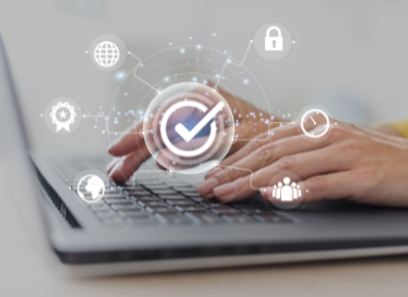M&A Outlook 2025 Guide for Decision Makers
Wiki Article
Why Every Company Requirements a Solid Cybersecurity Advisory 2025 Strategy
In 2025, organizations deal with a quickly progressing cyber threat landscape. The sophistication of attacks, driven by improvements in innovation, necessitates a strong cybersecurity advisory strategy. This method not only improves threat evaluation however additionally cultivates a society of safety and security awareness amongst staff members. As essential framework ends up being progressively susceptible, the need for aggressive procedures ends up being clear. What steps should companies require to ensure their defenses are durable sufficient to withstand these difficulties?The Evolving Cyber Threat Landscape
As cyber hazards proceed to evolve, companies should remain vigilant in adjusting their protection procedures. The landscape of cyber risks is marked by raising class, with enemies employing innovative methods such as expert system and artificial intelligence to manipulate vulnerabilities. Ransomware assaults have surged, targeting important infrastructure and requiring significant ransom money, while phishing plans have actually ended up being extra misleading, commonly bypassing conventional security procedures.In addition, the increase of the Net of Things (IoT) has actually expanded the strike surface area, offering brand-new entrance factors for cybercriminals. Organizations face challenges not just from outside risks however also from expert threats, as staff members may inadvertently compromise delicate data. To effectively combat these progressing dangers, companies have to prioritize positive approaches, including normal updates to their security infrastructure and continuous worker training. By remaining informed concerning the current trends in cyber dangers, companies can much better secure their possessions and preserve durability in a significantly hostile digital atmosphere.
The Relevance of Danger Evaluation
Comprehending the importance of risk assessment is crucial for organizations aiming to strengthen their cybersecurity stance. A thorough threat analysis identifies susceptabilities and potential threats, enabling organizations to prioritize their sources effectively. By evaluating the chance and impact of numerous cyber threats, companies can make educated decisions regarding their safety and security steps.Additionally, danger evaluations help organizations recognize their conformity responsibilities and the legal ramifications of information breaches. They supply insights right into the company's current security techniques and emphasize locations needing improvement. This proactive technique promotes a culture of safety recognition amongst workers, encouraging them to acknowledge and report possible hazards.
Furthermore, performing regular risk assessments makes certain that organizations continue to be dexterous in attending to emerging dangers in the dynamic cyber landscape. Inevitably, a robust danger assessment process contributes in creating a customized cybersecurity strategy that aligns with organizational objectives while protecting important assets.
Positive Measures for Cyber Defense
Implementing positive measures for cyber protection is crucial for companies seeking to minimize possible risks prior to they rise. A detailed cybersecurity approach should consist of routine susceptability analyses and penetration testing to identify weaknesses in systems. By carrying out these analyses, organizations can address susceptabilities prior to they are manipulated by destructive stars.In addition, continual monitoring of networks and systems is essential. This includes using innovative hazard discovery technologies that can identify uncommon task in real-time, enabling speedy responses to possible breaches. Staff member training on cybersecurity ideal techniques is important, as human error usually provides considerable dangers. Organizations needs to promote a society of safety and security recognition, making sure that workers recognize their duty in protecting sensitive info.
Establishing an event response strategy makes it possible for companies to react efficiently to violations, lessening damages and recovery time. By applying these positive procedures, organizations can substantially boost their cyber defense posture and protect their digital assets.
Enhancing Remote Job Security
While the change to remote job has actually supplied versatility and ease, it has likewise presented significant cybersecurity difficulties that companies need to resolve. To improve remote work safety, companies require to apply durable protection protocols that safeguard sensitive information. This includes using digital private networks (VPNs) to secure internet connections, making certain that employees can access business sources safely.Furthermore, companies should mandate multi-factor authentication (MFA) to include an added layer of safety and security for remote gain access to - Reps and Warranties. Regular training sessions for employees on determining phishing attempts and preserving safe and secure practices are likewise crucial
Furthermore, organizations need to perform regular safety analyses to recognize vulnerabilities in their remote job framework. By taking on these approaches, companies can efficiently alleviate threats linked with remote job, securing both their information and their online reputation. Stressing a society of cybersecurity recognition will certainly even more encourage workers to contribute to a safe remote workplace.
Leveraging Cloud Technologies Safely
A growing number of organizations are migrating to cloud modern technologies to improve functional efficiency and scalability, however this transition additionally requires strict protection procedures. Appropriately leveraging cloud solutions requires a detailed understanding of prospective susceptabilities and threats linked with common atmospheres. Organizations should implement solid gain access to controls, guaranteeing that only accredited workers can access sensitive information. File encryption of data both in transportation and at rest is vital to securing info from unapproved gain access to.Regular audits and surveillance can aid recognize anomalies and prospective dangers, allowing organizations to respond proactively. In addition, adopting a multi-cloud method can lower reliance on a solitary supplier, potentially minimizing the influence of breaches. Employee training on cloud protection best techniques is vital to foster a security-aware culture. By incorporating these measures right into their cloud strategy, organizations can harness the benefits of cloud modern technologies while mitigating security dangers properly.
Maintaining Client Count On and Reputation
Exactly how can companies make certain that customer depend on and online reputation remain intact in a significantly electronic landscape? To attain this, organizations should focus on openness and aggressive communication. By clearly detailing their cybersecurity actions and promptly attending to any kind of potential breaches, they can promote a society of trust. On a regular basis upgrading customers regarding protection protocols and potential risks demonstrates a commitment to securing their information.Additionally, companies need to purchase comprehensive cybersecurity training for employees, guaranteeing that everybody understands their role in safeguarding consumer details. Carrying out durable security steps, such as multi-factor verification and security, further enhances the organization's devotion to keeping client depend on.
Moreover, gathering and acting on client feedback concerning security practices can enhance relationships. By being responsive and flexible to customer worries, organizations not only secure their online reputation yet likewise enhance their trustworthiness on the market. Thus, a steady focus on cybersecurity is necessary for sustaining customer depend on.
Ensuring Regulatory Compliance and Legal Security

A solid cybersecurity advisory approach helps companies identify relevant policies, such as GDPR, HIPAA, and CCPA, and carry out necessary procedures to abide by them. This technique not only makes sure compliance however additionally improves lawful security versus potential breaches and abuse of data.
Moreover, companies can take advantage of routine audits and analyses to assess their cybersecurity pose and recognize susceptabilities. By promoting a society of conformity and continual improvement, services can minimize threats and show their commitment to securing delicate info. Inevitably, buying a durable cybersecurity strategy enhances both regulatory compliance and lawful defense, securing the company's future.
Regularly Asked Inquiries

Exactly How Can Organizations Identify Their Details Cybersecurity Needs?
Organizations can identify their details cybersecurity requirements by conducting threat assessments, evaluating existing security steps, assessing potential risks, and engaging with stakeholders to comprehend vulnerabilities, ultimately producing a customized technique to attend to one-of-a-kind challenges.What Budget plan Should Be Designated for Cybersecurity Advisory Providers?

Just How Frequently Should Cybersecurity Methods Be Upgraded?
Cybersecurity strategies ought to be upgraded at the very least annually, in addition to after considerable cases or changes in technology (Cybersecurity Advisory 2025). Routine evaluations make sure performance versus evolving threats and compliance with regulative demands, preserving business durability against cyber dangersWhat Certifications Should a Cybersecurity Expert Possess?
A cybersecurity expert need to have relevant accreditations, such as copyright or CISM, substantial experience in threat monitoring, understanding of conformity laws, solid logical abilities, and the capability to interact complicated ideas successfully to diverse audiences.Exactly How Can Organizations Determine the Efficiency of Their Cybersecurity Approach?
Organizations can determine the Reps and Warranties efficiency of their cybersecurity strategy via regular audits, keeping track of event reaction times, examining hazard intelligence, carrying out employee training analyses, and reviewing conformity with sector criteria and regulations to ensure continuous renovation.Report this wiki page